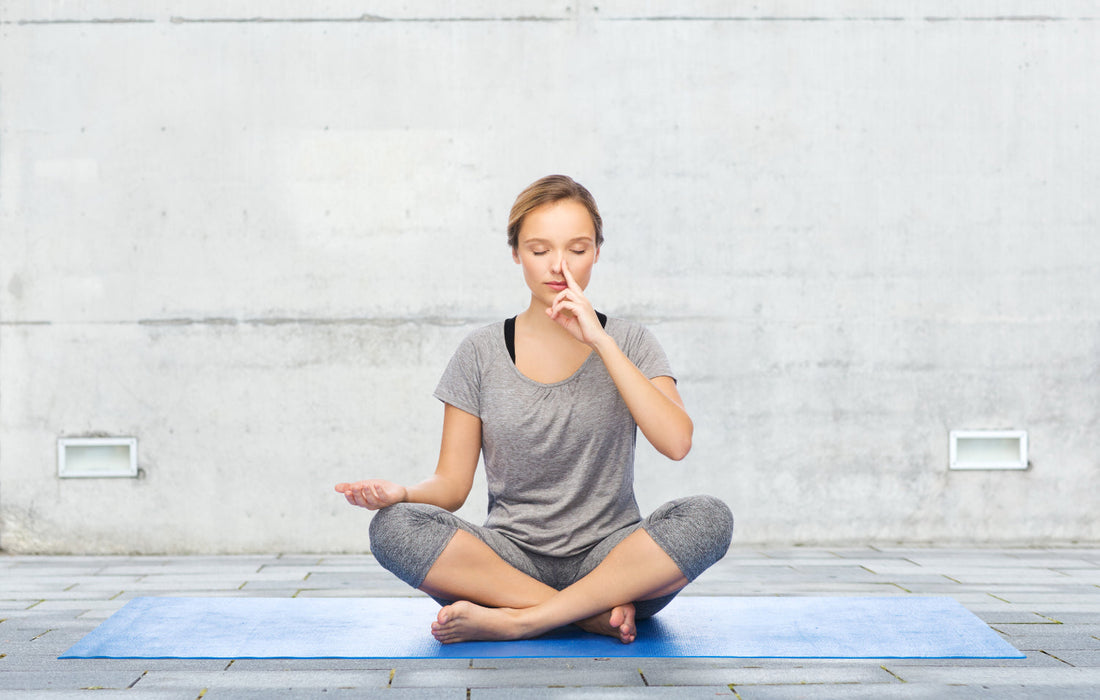In today’s fast-paced world, finding moments of calm can feel like a challenge. Whether it's due to the pressures of work or personal responsibilities, stress has a way of creeping into our lives. That's where simple yet powerful techniques like the 4-7-8 breathing method come into play. Rooted in ancient yogic practices, the 4-7-8 breathing technique has been widely followed for its ability to help ease stress and bring a sense of calm. But what exactly is this technique, and how does it work? Let's dive into the science behind 4-7-8 breathing, its benefits, and how you can incorporate it into your daily routine.
What is 4-7-8 Breathing?
The 4-7-8 breathing technique is a simple, structured form of deep breathing that supports relaxation. It consists of four steps: inhaling for 4 seconds, holding your breath for 7 seconds, and exhaling through your mouth for 8 seconds, producing a “whoosh” sound. While it may sound straightforward, this practice has a deep-rooted impact on the body’s stress response.
This breathing method is part of a broader category of slow breathing exercises, which have been a key element in yogic practices for centuries. The goal is to engage the parasympathetic nervous system, often referred to as the "rest and digest" system, while slowing down the overactive sympathetic nervous system, which is responsible for the "fight or flight" response.
How Does 4-7-8 Breathing Work?
The effectiveness of the 4-7-8 breathing technique lies in its ability to help regulate the breath and maintain healthy heart rate. By consciously controlling the rhythm of your breathing, you encourage the body to shift from a state of heightened alertness to a more relaxed mode.
- Inhale for 4 Seconds: The first step in the practice involves a slow, deep breath through the nose, lasting 4 seconds. This action fills the lungs with oxygen, providing the body with the fuel it needs to function efficiently.
- Hold for 7 Seconds: Holding your breath for 7 seconds allows time for oxygen to be properly absorbed into the bloodstream which helps ease the body's stress response.
- Exhale for 8 Seconds: The final step involves a slow, controlled exhale through the mouth, creating a “whoosh” sound. This long exhalation helps ease tension and restore healthy heart rate, creating a calming effect on the body.
Through this pattern, 4-7-8 breathing aids a state of deep relaxation. It’s also beneficial for people experiencing stress, anxiety, or difficulty falling asleep.
Benefits of 4-7-8 Breathing
Practicing 4-7-8 breathing offers several advantages for overall well-being. Here are some of the key benefits you may experience:
-
Helps Maintain Calm During Stress
One of the primary benefits of the 4-7-8 breathing technique helps maintain calm during times of stress. This method supports healthy "fight or flight" response, making it an excellent tool for calming the mind when anxiety strikes. -
Supports Better Sleep
Struggling to fall asleep? The 4-7-8 breathing technique can help ease the transition from wakefulness to sleep by restoring healthy heart rate and quieting the mind. By practicing 4-7-8 breathing before bed, you may find yourself falling asleep more easily and enjoying more restful sleep. -
Helps Enhance Focus and Concentration
By practicing 4-7-8 breathing regularly, you can help enhance your ability to focus. Deep breathing improves oxygen flow to the brain, supporting mental clarity and concentration, making it particularly useful during moments when focus is required. -
Helps Ease Physical Discomfort
Since this technique encourages slow breathing and relaxation, it can help ease discomforts that arise from stress-related health issues. By calming your mind, 4-7-8 breathing may alleviate tension in the body, allowing for a more relaxed physical state. -
Aids Mindful Breathing
Incorporating 4-7-8 breathing into your daily routine fosters mindfulness, which is known for its positive impact on emotional regulation and overall mental well-being. Engaging in slow, intentional breathing can create a meditative state, grounding you in the present moment.
Best Ways to Practice 4-7-8 Breathing
Now that we’ve covered the benefits, let’s walk through how to practice 4-7-8 breathing effectively:
- Find a quiet space where you can sit comfortably with your back straight.
- Close your eyes and relax your body.
- Inhale quietly through your nose for 4 seconds, letting your lungs fill with air.
- Hold your breath for 7 seconds, allowing the oxygen to saturate your system.
- Slowly exhale through your mouth for 8 seconds, making a soft whooshing sound.
- Repeat the cycle at least four times or until you feel more relaxed.
As with any breathing technique, consistency is key. Practicing 4-7-8 breathing daily can make it more effective in managing stress and promoting calm.
When to Use 4-7-8 Breathing
There are several moments throughout the day when practicing 4-7-8 breathing can be beneficial. Here are a few examples:
- Before Bed
- During Stressful Situations
- After Exercise
- When You Need Focus
Conclusion
The 4-7-8 breathing technique is a simple yet powerful practice that can help you maintain a sense of calm in the face of stress, enhance focus, and even support better sleep. Rooted in ancient yogic practices and embraced by integrative medicine, it offers a natural way to manage life’s daily challenges. Whether you're looking to fall asleep faster or bring more mindfulness to your day, the 4-7-8 breathing method is a valuable tool to have in your wellness toolkit.
By taking just a few moments each day to focus on your breath, you can help restore balance to both your mind and body, one breath at a time.






